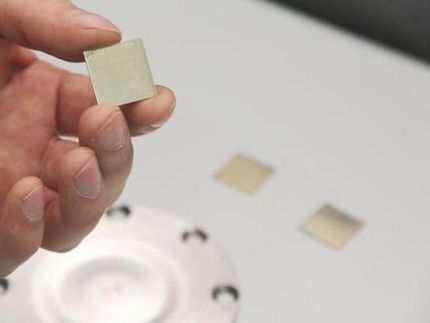Discovery sheds light on nuclear reactor fuel behavior during a severe event
New discovery about melted UO2 structure will enhance understanding of reactor safety during meltdown scenario
Advertisement
A new discovery about the atomic structure of uranium dioxide will help scientists select the best computational model to simulate severe nuclear reactor accidents. Using the Advanced Photon Source (APS), a Department of Energy (DOE) Office of Science User Facility, researchers from DOE's Argonne National Laboratory and Brookhaven National Laboratory, along with Materials Development, Inc., Stony Brook University, and Carnegie Institution of Washington, found that the atomic structure of uranium dioxide (UO2) changes significantly when it melts.
UO2 is the primary fuel component in the majority of existing nuclear reactors, but little is known about the molten state because of its extremely high melting point. Until now, the extremely high temperature and chemical reactivity of the melt have hindered studies of molten UO2. This lack of fundamental information has made it difficult to evaluate issues associated with the interaction of molten UO2 with a reactor's zirconium cladding and steel containment vessel.
The research team found that when uranium dioxide melts, the number of oxygen atoms around uranium changes from eight-fold to a mixture of six- and seven-fold, which changes the way it interacts with other materials. Many existing models, however, do not account for this change in structure or the rapid oxygen dynamics that occur at high temperatures.
"Determining the behavior of UO2 under extreme conditions is essential to enhancing our understanding of reactor safety during severe accidents," said Mark Williamson of Argonne's Chemical Sciences and Engineering Division.
"Very few places in the world have the capability to safely measure the structure of molten UO2 at 3,000 degrees Celsius without introducing contamination from the container that holds the melt," added Chris Benmore of Argonne's X-ray Science Division.
Researchers studied the UO2 in the hot crystalline and molten states. In this experiment, researchers relied on the APS's high-energy synchrotron X-ray beam to study a bead of UO2 that was aerodynamically levitated on a stream of argon and heated with a laser beam.
Most read news
Other news from the department science

Get the chemical industry in your inbox
By submitting this form you agree that LUMITOS AG will send you the newsletter(s) selected above by email. Your data will not be passed on to third parties. Your data will be stored and processed in accordance with our data protection regulations. LUMITOS may contact you by email for the purpose of advertising or market and opinion surveys. You can revoke your consent at any time without giving reasons to LUMITOS AG, Ernst-Augustin-Str. 2, 12489 Berlin, Germany or by e-mail at revoke@lumitos.com with effect for the future. In addition, each email contains a link to unsubscribe from the corresponding newsletter.





























































